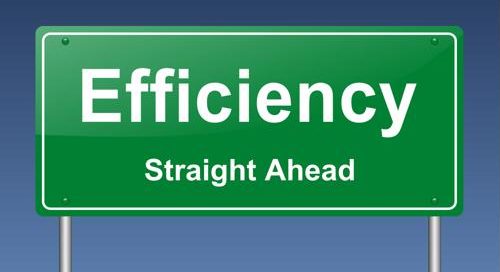With 89 percent of companies either expanding their IT budgets or maintaining current investment figures, there is plenty of opportunity for small and medium-sized businesses to improve various aspects of their operations. According to Spiceworks, organizations that increase their 2019 IT budgets likely will do so, on average, by 20 percent.
Where should they be investing these additional gains? There are a lot of options to consider: infrastructure and hardware, cloud platforms and cybersecurity tools to name just a few. One of the best ways to gain tangible ROI on any IT investment is to look for improvements that drive operational productivity and efficiency. Here are three ways IT leaders can do just that:
1. Implement automation wherever possible
Manual processes are a drain on IT productivity and efficiency - not to mention, they increase the risk of human error in a variety of business-critical, internal workflows. Automation streamlines time-consuming and arduous IT tasks, enabling organizations to run faster, more efficiently and with fewer headaches.
Automating the IT ticketing process, for instance, enables help desk teams to assign new tickets in a dynamic manner, with workloads being evenly distributed among all personnel. This way, no one is ever overloaded with an excessive amount of work, and IT teams can focus on actually addressing tickets rather than worry about the nitty-gritty details regarding assignment and escalation workflows.
Very few - if any - internal processes are bad fits for automation integration, so IT leaders should look for every opportunity possible to automate their internal workflows.
 Network performance upgrades will lead to a productivity increase.
Network performance upgrades will lead to a productivity increase.2. Improve network performance, uptime
Every business today depends on network connectivity - some more than others. Network latency and downtime is a huge threat to organizational productivity, as well as business operability in general. On average, a single hour of downtime costs businesses $100,000, according to Information Technology Intelligence Consulting.
Network issues don't have to be quite that catastrophic to have an adverse effect on an organization's productivity and efficiency. Network latency can prevent employees in every business unit from working as quickly and effectively as possible, and may leave critical software platforms and applications virtually unusable.
Improving network performance, either through infrastructure enhancements or software-based solutions like network monitoring tools and dynamic traffic routing capabilities, enhances connectivity and enables employees to stay productive throughout the workday.
"Offload business-critical tasks to a managed IT services provider."
3. Embrace managed IT services
The modern business is a complex web of software and hardware, making it difficult for in-house IT teams to manage. In fact, many are overwhelmed by the sheer number of responsibilities they must tackle.
Offloading business-critical tasks to a managed IT services provider reduces the inefficiencies that manifest in strictly on-prem environments, making your organization run faster and smoother than ever before. In addition, businesses gain the benefit of expert IT support without needing to pay a king's ransom hiring in-house staff with specialized knowledge. In this way, managed IT services offer the best in quality, performance and affordability.
To get the best IT managed services available in the New York area, contact TEKConn today.


Leave a comment!
You must be logged in to post a comment.